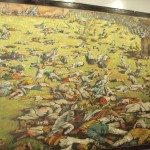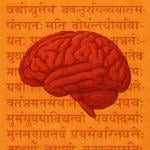Ramanujan had made a conjecture on his death bed in a letter to Hardy discussing mock modular forms.
Ramanujan’s letter described several new functions that behaved differently from known theta functions, or modular forms, and yet closely mimicked them. Functions are equations that can be drawn as graphs on an axis, like a sine wave, and produce an output when computed for any chosen input or value. Ramanujan conjectured that his mock modular forms corresponded to the ordinary modular forms earlier identified by Carl Jacobi, and that both would wind up with similar outputs for roots of 1.
Ramanujan, a devout Hindu, thought these patterns were revealed to him by the goddess Namagiri.
The trouble was that no one really understand what the heck Ramanujam was talking back then. Until recently.
‘It wasn’t until 2002, through the work of Sander Zwegers, that we had a description of the functions that Ramanujan was writing about in 1920,’ Ono said.
Ono and his colleagues drew on modern mathematical tools that had not been developed before Ramanujan’s death to prove this theory was correct. ‘We proved that Ramanujan was right,’ Ono says. ‘We found the formula explaining one of the visions that he believed came from his goddess.’
The team were also stunned to find the function could be used today. ‘No one was talking about black holes back in the 1920s when Ramanujan first came up with mock modular forms, and yet, his work may unlock secrets about them,’ Ono says.





















